Abstract
Although positive direct Coombs' tests occur in most patients with active systemic lupus erythematosus (SLE), haemolytic anaemic associated with antibody to erythrocytes (E) occurs in less than 10%. Our studies show an association between positive direct Coombs' tests and both the presence of circulating immune complexes and diminished activity of the C3b receptor (CR1) of E. Data presented in this report suggest that in vivo binding of immune complexes and complement by the CR1 of E results in positive direct Coombs' tests in the absence of antibody to E. These observations explain the low frequency of haemolytic anaemia compared with the high frequency of direct positive Coombs' tests in patients with SLE.
Full text
PDF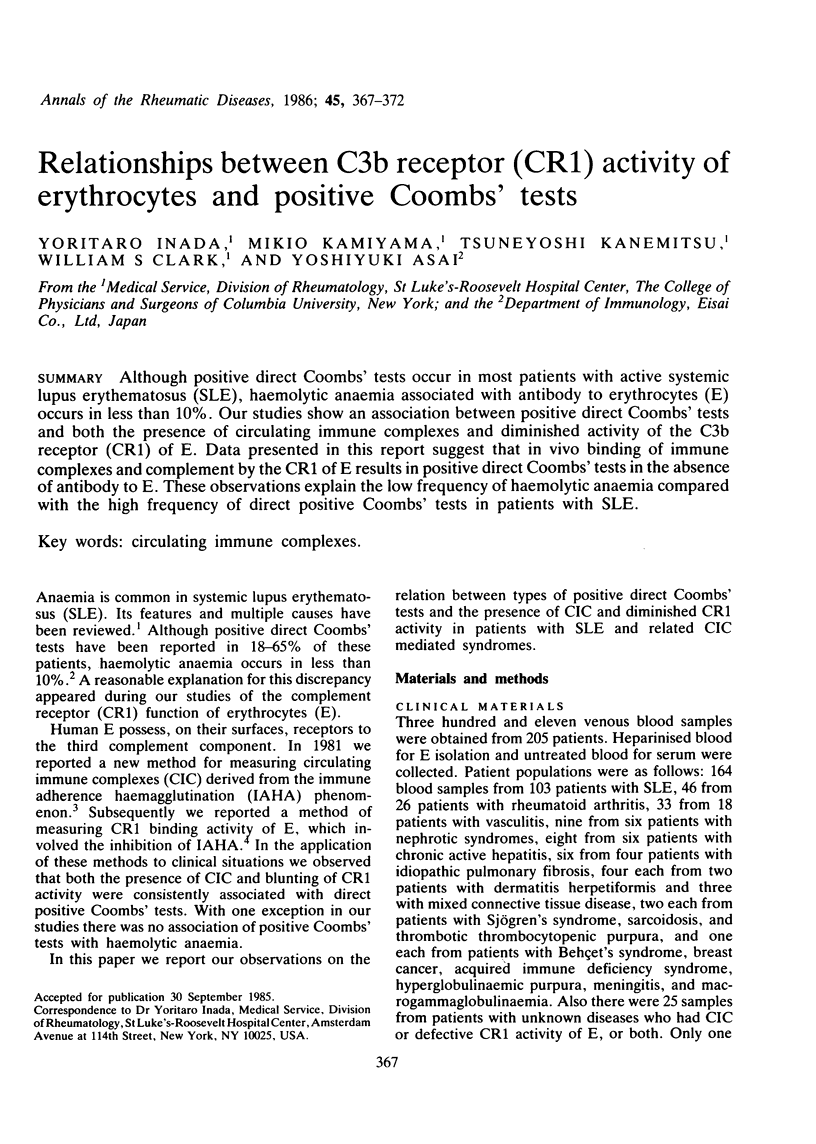
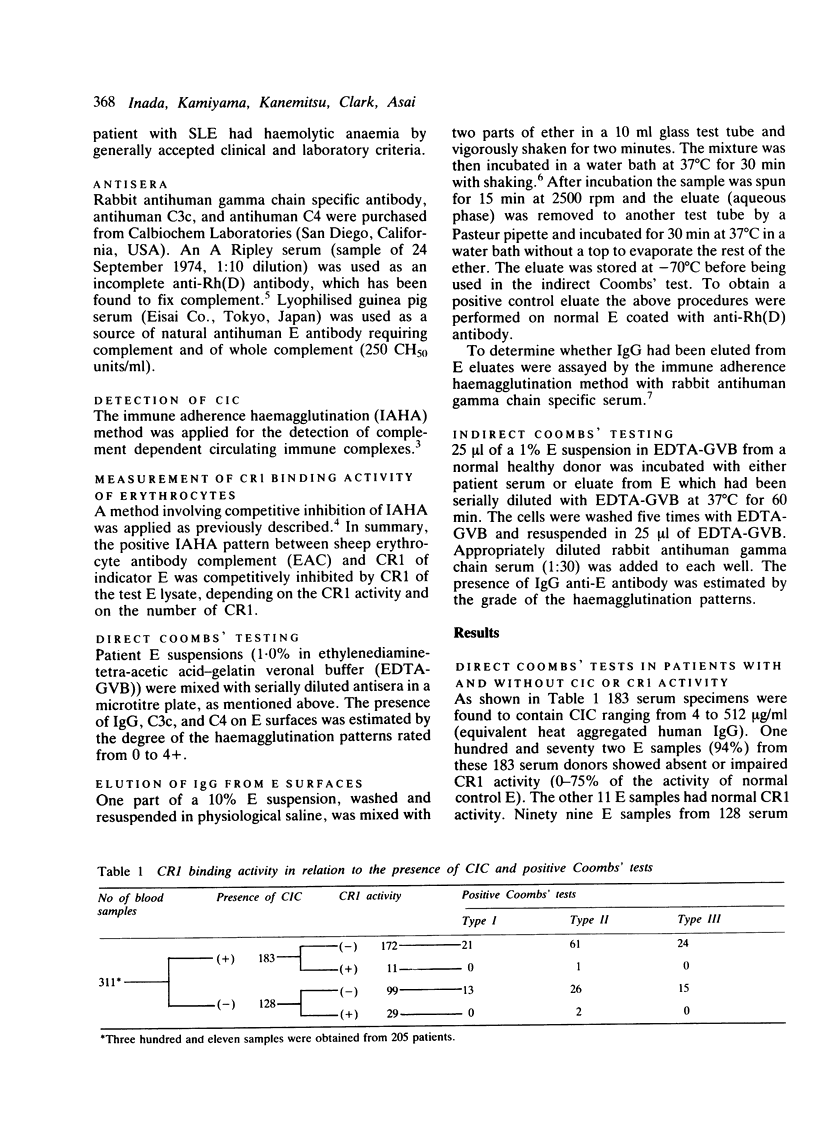
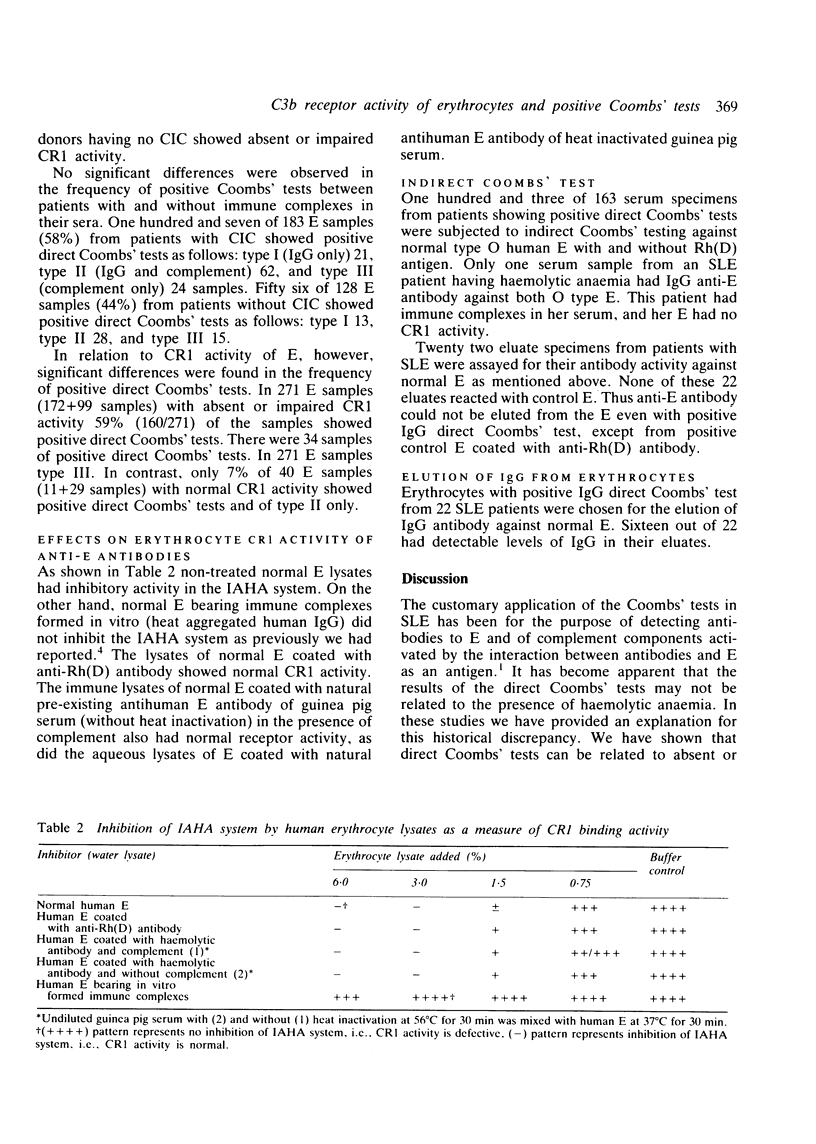
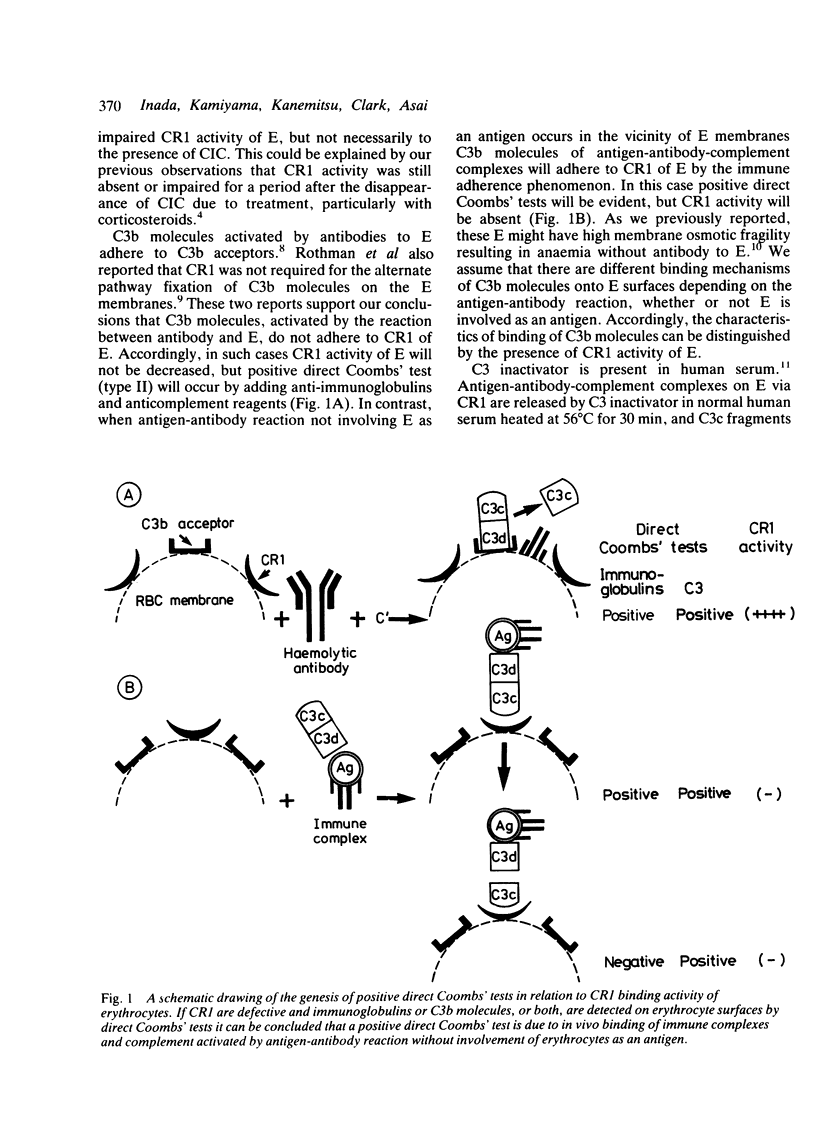
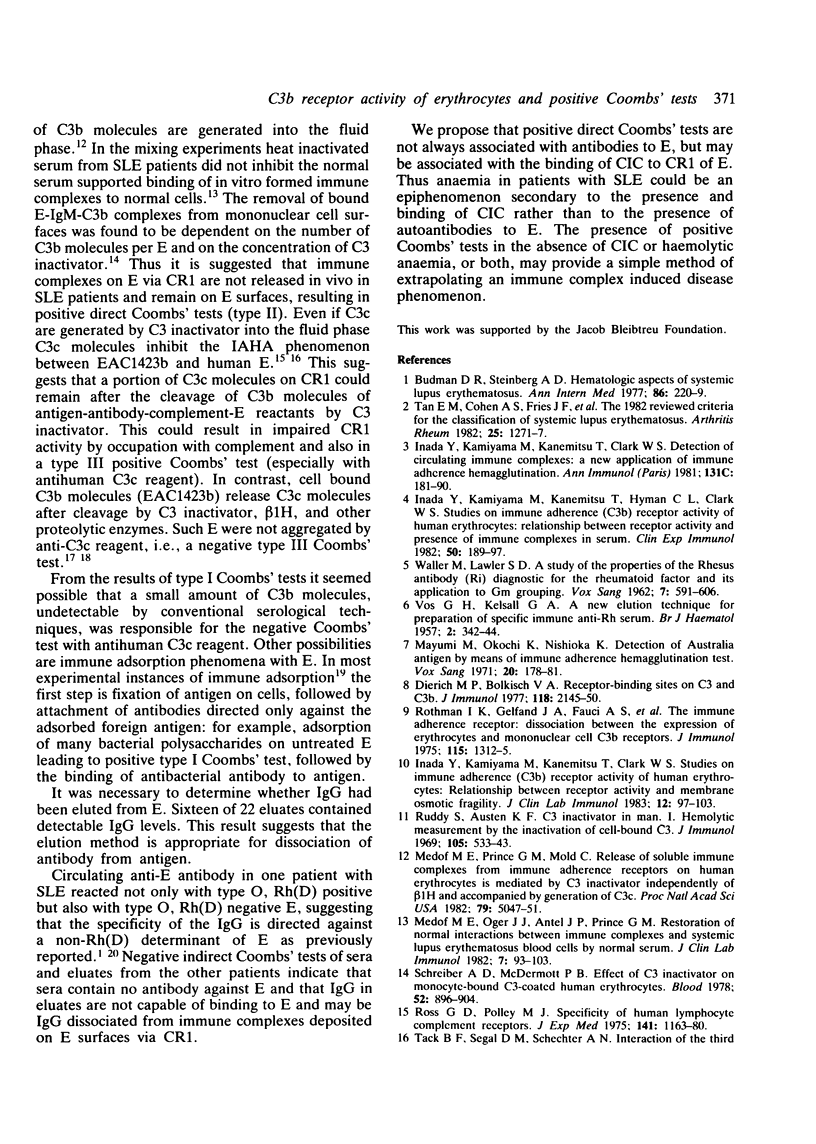
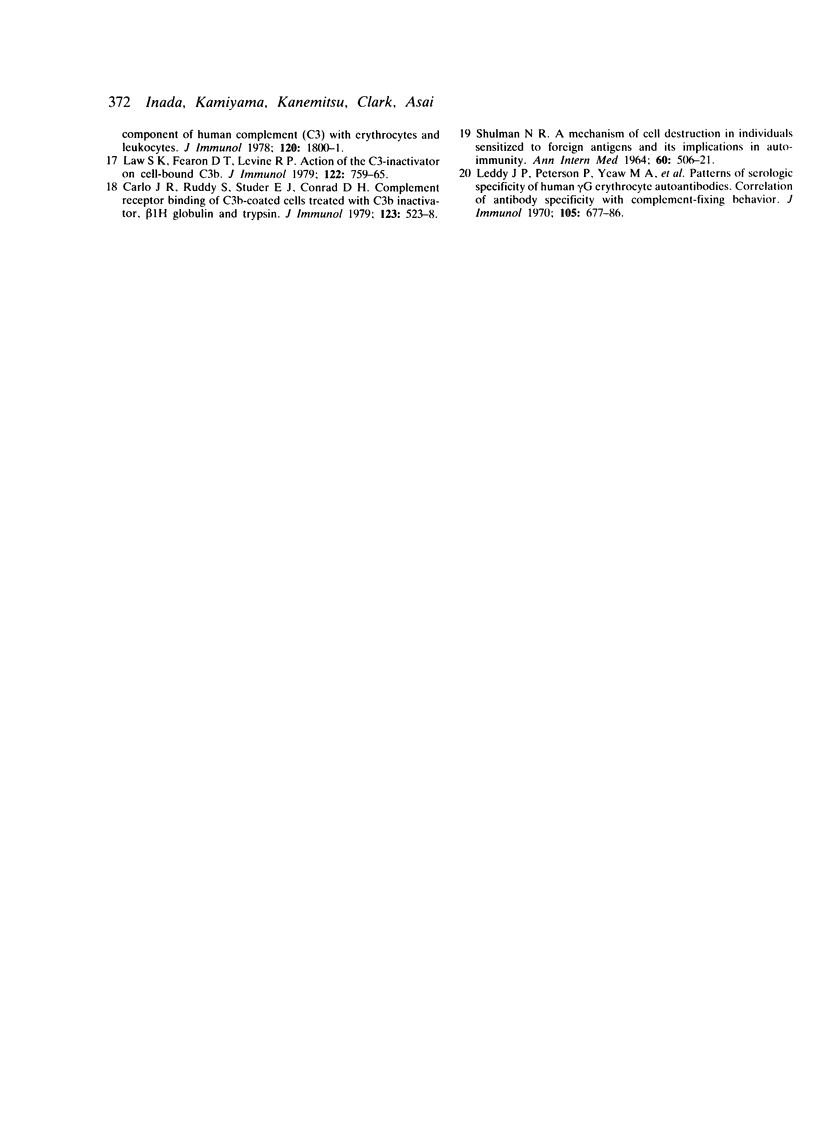
Selected References
These references are in PubMed. This may not be the complete list of references from this article.
- Budman D. R., Steinberg A. D. Hematologic aspects of systemic lupus erythematosus. Current concepts. Ann Intern Med. 1977 Feb;86(2):220–229. doi: 10.7326/0003-4819-86-2-220. [DOI] [PubMed] [Google Scholar]
- Carlo J. R., Ruddy S., Studer E. J., Conrad D. H. Complement receptor binding of C3b-coated cells treated with C3b inactivator, beta 1H globulin and trypsin. J Immunol. 1979 Aug;123(2):523–528. [PubMed] [Google Scholar]
- Dierich M. P., Bokisch V. A. Receptor-binding sites on C3 and C3b. J Immunol. 1977 Jun;118(6):2145–2150. [PubMed] [Google Scholar]
- Inada Y., Kamiyama M., Kanemitsu T., Clark W. S. Detection of circulating immune complexes: a new application of immune adherence haemagglutination. Ann Immunol (Paris) 1981 Mar-Apr;132C(2):181–190. doi: 10.1016/0769-2625(81)90026-x. [DOI] [PubMed] [Google Scholar]
- Inada Y., Kamiyama M., Kanemitsu T., Clark W. S. Studies on immune adherence (C3b) receptor activity of human erythrocytes: relationship between receptor activity and membrane osmotic fragility. J Clin Lab Immunol. 1983 Oct;12(2):97–103. [PubMed] [Google Scholar]
- Inada Y., Kamiyama M., Kanemitsu T., Hyman C. L., Clark W. S. Studies on immune adherence (C3b) receptor activity of human erythrocytes: relationship between receptor activity and presence of immune complexes in serum. Clin Exp Immunol. 1982 Oct;50(1):189–197. [PMC free article] [PubMed] [Google Scholar]
- KELSALL G. A., VOS G. H. A new elution technique for the preparation of specific immune anti-Rh serum. Br J Haematol. 1956 Oct;2(4):342–344. doi: 10.1111/j.1365-2141.1956.tb06708.x. [DOI] [PubMed] [Google Scholar]
- Law S. K., Fearon D. T., Levine R. P. Action of the C3b-inactivator on the cell-bound C3b. J Immunol. 1979 Mar;122(3):759–765. [PubMed] [Google Scholar]
- Leddy J. P., Peterson P., Yeaw M. A., Bakemeier R. F. Patterns of serologic specificity of human gamma-G erythrocyte autoantibodies. Correlation of antibody specificity with complement-fixing behavior. J Immunol. 1970 Sep;105(3):677–686. [PubMed] [Google Scholar]
- Mayumi M., Okochi K., Nishioka K. Detection of Australia antigen by means of immune adherence haemagglutination test. Vox Sang. 1971 Feb;20(2):178–181. doi: 10.1111/j.1423-0410.1971.tb00549.x. [DOI] [PubMed] [Google Scholar]
- Medof M. E., Oger J. J., Antel J. P., Prince G. M. Restoration of normal interactions between immune complexes and systemic lupus erythematosus blood cells by normal serum. J Clin Lab Immunol. 1982 Feb;7(2):93–103. [PubMed] [Google Scholar]
- Medof M. E., Prince G. M., Mold C. Release of soluble immune complexes from immune adherence receptors on human erythrocytes is mediated by C3b inactivator independently of Beta 1H and is accompanied by generation of C3c. Proc Natl Acad Sci U S A. 1982 Aug;79(16):5047–5051. doi: 10.1073/pnas.79.16.5047. [DOI] [PMC free article] [PubMed] [Google Scholar]
- Ross G. D., Polley M. J. Specificity of human lymphocyte complement receptors. J Exp Med. 1975 May 1;141(5):1163–1180. doi: 10.1084/jem.141.5.1163. [DOI] [PMC free article] [PubMed] [Google Scholar]
- Rothman I. K., Gelfand J. A., Fauci A. S., Frank M. M. The immune adherence receptor: dissociation between the expression of erythrocyte and mononuclear cell C3b receptors. J Immunol. 1975 Nov;115(5):1312–1315. [PubMed] [Google Scholar]
- Ruddy S., Austen K. F. C3 inactivator of man. I. Hemolytic measurement by the inactivation of cell-bound C3. J Immunol. 1969 Mar;102(3):533–543. [PubMed] [Google Scholar]
- SHULMAN N. R. A MECHANISM OF CELL DESTRUCTION IN INDIVIDUALS SENSITIZED TO FOREIGN ANTIGENS AND ITS IMPLICATIONS IN AUTO-IMMUNITY. COMBINED CLINICAL STAFF CONFERENCE AT THE NATIONAL INSTITUTES OF HEALTH. Ann Intern Med. 1964 Mar;60:506–521. doi: 10.7326/0003-4819-60-3-506. [DOI] [PubMed] [Google Scholar]
- Schreiber A. D., McDermott P. B. Effect of C3b inactivator on monocyte-bound C3-coated human erythrocytes. Blood. 1978 Nov;52(5):896–904. [PubMed] [Google Scholar]
- Tan E. M., Cohen A. S., Fries J. F., Masi A. T., McShane D. J., Rothfield N. F., Schaller J. G., Talal N., Winchester R. J. The 1982 revised criteria for the classification of systemic lupus erythematosus. Arthritis Rheum. 1982 Nov;25(11):1271–1277. doi: 10.1002/art.1780251101. [DOI] [PubMed] [Google Scholar]
- WALLER M., LAWLER S. D. A study of the properties of the Rhesus antibody (Ri) diagnostic for the rheumatoid factor and its application to Gm grouping. Vox Sang. 1962 Sep-Oct;7:591–606. doi: 10.1111/j.1423-0410.1962.tb04289.x. [DOI] [PubMed] [Google Scholar]


